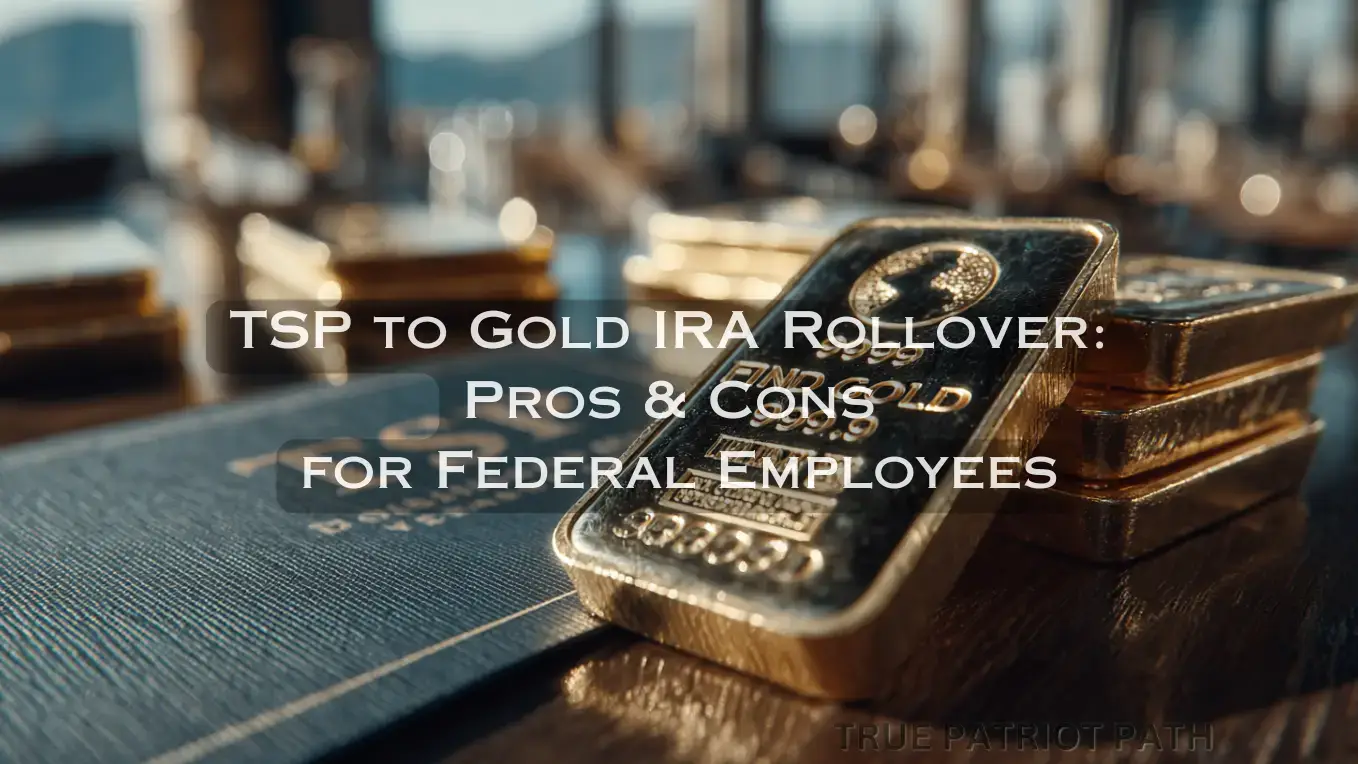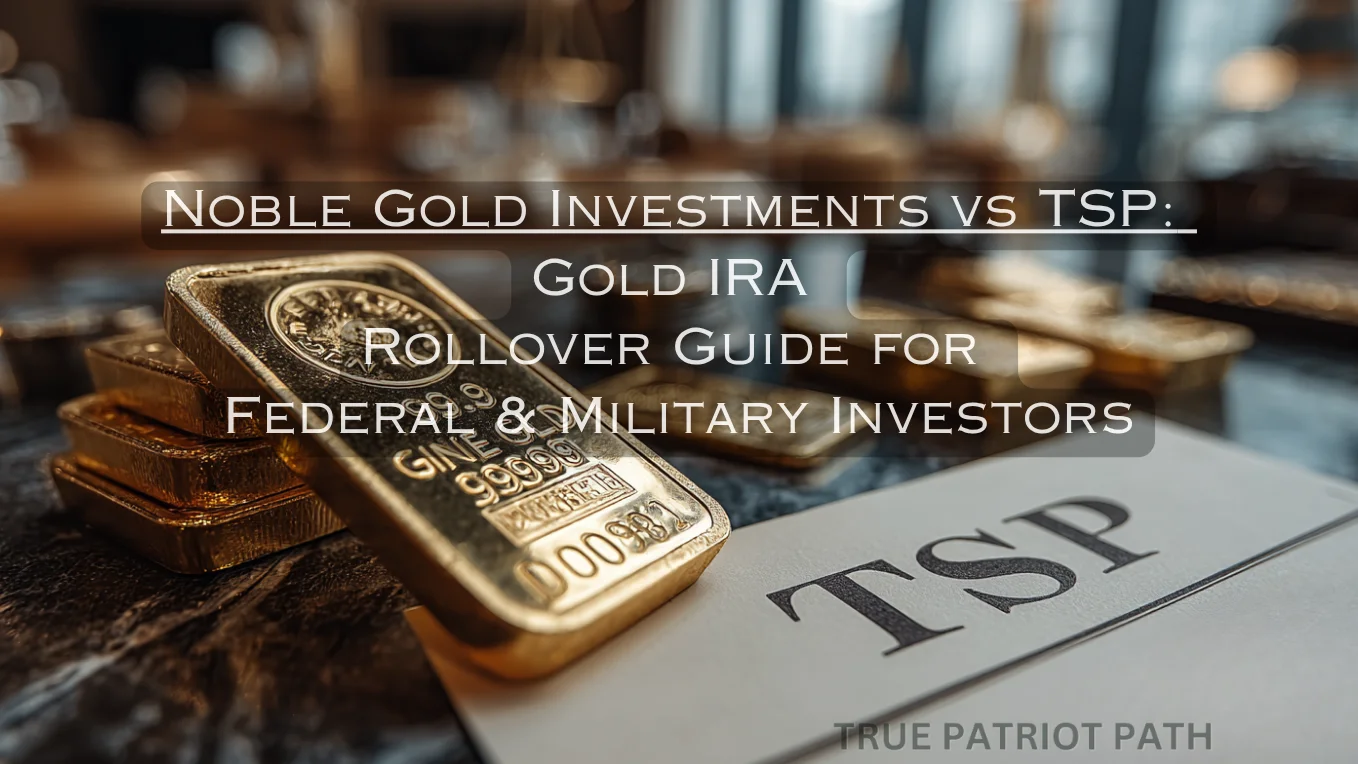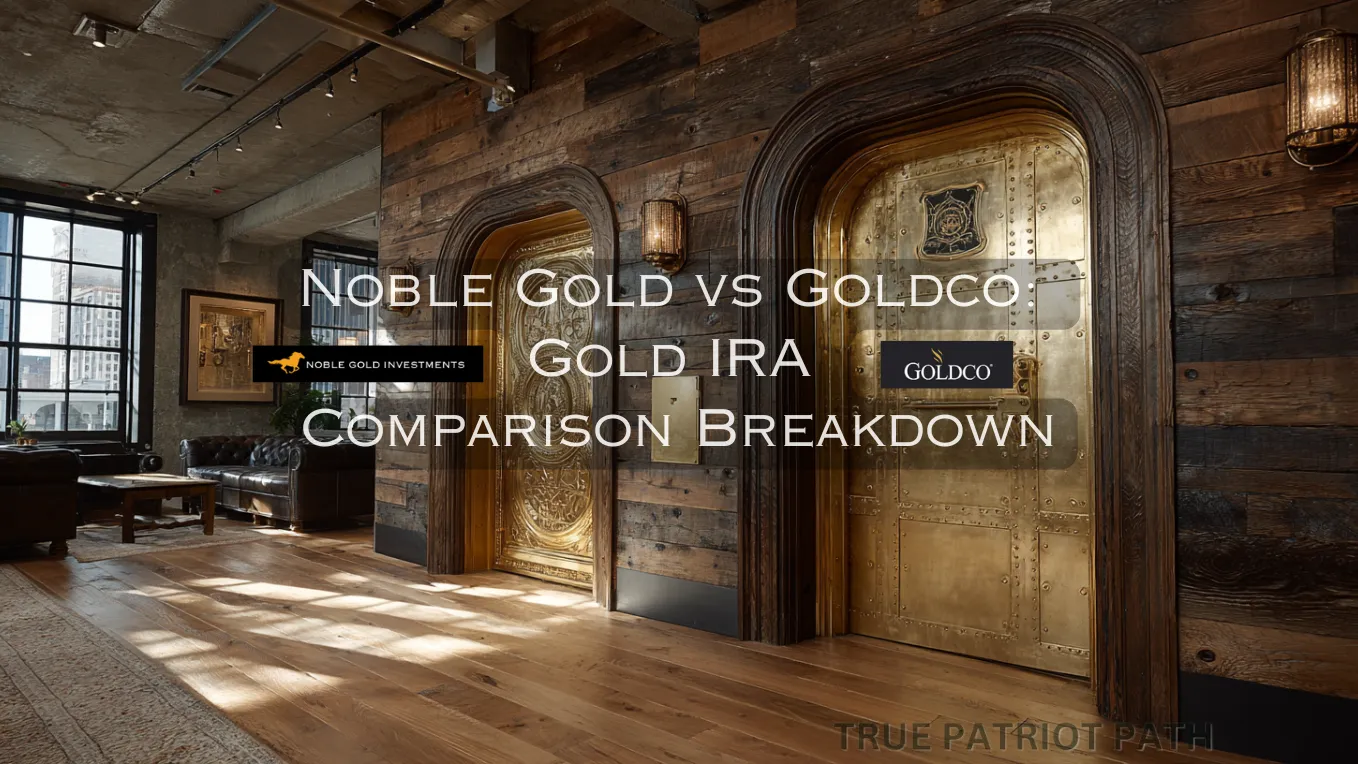Ray Dalio puts great value in gold within his financial plan because of its long and proven history as a solid wealth holder. Backing this up is that gold's worth tends to rise when regular markets become unstable, such as during high inflation or economic downturns. Here's where it gets interesting - Despite changes in fiat currencies or the ups and downs of financial markets, Dalio maintains that gold carries its own weight irrespective of these factors.
This makes it a sturdy safeguard for wealth, especially during rough economic times. From here, let's explore more about Dalio's golden strategy.
Ray Dalio's preference for gold stems from its historical significance as a store of value during economic uncertainty and inflationary pressures. He sees gold as a hedge against currency devaluation and a means to preserve buying power.
Jim Rickards - "In a world of money printing, gold stands out as real money with intrinsic value."
Why Ray Dalio Prefers Gold as a Hedge
He's one of the most respected figures in the investment world, firmly believes in the enduring value of gold as a hedge. During uncertain economic times or periods of rapid inflation, he considers gold a safe haven for investors to protect their wealth.
Given the rise of modern financial instruments, this viewpoint might seem outdated to some, but his wisdom is rooted in centuries of human history, not fleeting trends.
Throughout history, even during turbulent periods when currencies fluctuated and markets experienced extreme volatility, gold remained a reliable store of value.
Its rarity and unique physical properties have made it desirable across various civilizations and eras. In times of economic distress or geopolitical unrest, gold has consistently provided stability and security to those who possess it.
The Historical Significance of Gold
Gold has been valued for its intrinsic properties since ancient times, remaining resilient and steady amidst the ebb and flow of different economic systems.
This historic resilience highlights the enduring trust that individuals and institutions have placed in gold for preserving wealth—a trait that's particularly attractive to Ray Dalio and other forward-thinking investors seeking to safeguard their assets from market uncertainties.
For instance, during the 2008 financial crisis, while stock prices plummeted and uncertainty gripped global markets, the price of gold surged, illustrating its role as a reliable hedge against economic downturns.
He emphasizes that these historical patterns underscore gold's enduring ability to maintain its value over time, regardless of political or economic shifts.
By incorporating gold into his investment portfolio, Dalio seeks to mitigate risk and protect against the potential erosion of purchasing power caused by inflation or currency devaluation.
Investors who align with Dalio's perspective recognize gold not only as a timeless symbol of wealth but also as a pragmatic means to diversify their portfolios and shield themselves from market turbulence, thereby preserving their long-term financial well-being.
He prefers gold while other financial titans have contrasting views on its value.
Understanding Ray Dalio's reasoning behind favoring gold as a hedge reveals the depth of his strategic insight and serves as a compelling rationale for including this precious metal in investment portfolios.
Economic Security with Gold
We're referring to creating a safety net for our wealth when discussing economic security. We want to place our money somewhere stable that won't be significantly impacted by economic or financial market changes.
This is where gold comes into play. Gold has the astounding ability to hold its value even when other assets falter.
In times of inflation, when prices for everyday goods and services surge, the value of gold also tends to rise.
Thus, if you have a portion of your wealth invested in gold, it can act as a shield against the erosion of your purchasing power. It essentially maintains its worth when traditional currencies succumb to inflation.
Similarly, during periods of market uncertainty marked by extreme stock market volatility or geopolitical tensions, investors tend to turn to gold because it's viewed as a safe haven asset.
This phenomenon mirrors the idea of a 'gold rush' but on a larger scale. Investors flock to gold during turbulent times because they trust it to retain its value while other assets fluctuate.
To illustrate, when there's an earthquake, people seek refuge in sturdy doorways and take cover under robust tables. Similarly, when financial turmoil rattles the markets, people gravitate towards gold because it represents stability that other assets can't match.
Hold onto your hats; here's another captivating aspect! Unlike traditional currencies like the dollar or euro, gold isn't tethered to any specific government or country.
Therefore, it's not easily influenced by the actions or policies of individual governments. When central banks engage in questionable financial practices or start printing copious amounts of money, the value of gold becomes even more appealing as a separate entity from these volatile reactions.
It's like having your money stored in a magical treasure chest, protected from the chaos unfolding outside.
So, understanding why Ray Dalio prefers gold makes more sense now. He sees gold as a secure store of value that isn’t as susceptible to depreciation or massive fluctuations witnessed in traditional markets during times of economic upheaval.
Investing in or holding onto some gold can provide an extra layer of economic security that brings peace of mind during uncertain economic times. With its consistency in maintaining value and serving as a reliable asset during market volatility, gold stands out as a robust economic safeguard.
Portfolio Diversification through Gold
One of the primary reasons esteemed investors like Ray Dalio favor gold is its unique ability to enhance portfolio diversification.
Diversification, much like having a variety of items in your lunchbox, provides options if you don't like one food. Similarly, when it comes to investing, diversifying your assets means spreading your money across different types of investments instead of putting it all in one place.
Introducing gold into an investment portfolio can be a game-changer for several reasons. Gold's performance correlates poorly with other asset classes, such as stocks and bonds. This means that when stock or bond prices go up or down, the price of gold might not be affected similarly, fostering stability within the overall investment mix.
For instance, stocks and bonds may take a hit during economic uncertainty. Still, historically, the value of gold has tended to rise, acting as a countercyclical hedge, helping to offset losses in other areas of the portfolio.

Importance of Low Correlation
The importance of low correlation becomes apparent when we realize that it signifies how assets move about each other. When two assets have a low correlation, they tend to move independently from one another.
This is crucial because it means that having gold in your portfolio hedges against potential losses; even if the value of stocks or bonds drops, the value of gold can remain relatively stable.
A good analogy for this is a chef preparing a meal. In the same way, you wouldn't want to rely on just one type of investment when you're building wealth steadily over time.
Therefore, including gold in an investment portfolio makes the portfolio more resilient by reducing overall risk exposure—creating a more balanced financial strategy and reducing reliance on just one asset class.
Including gold within an investment portfolio certainly adds a layer of stability and resilience that complements traditional asset classes, setting the stage for internalizing the long-term benefits within any investor's reach.
As we continue exploring the world of gold and its multifaceted roles in investment strategies, let's now pivot to understanding its significance as market insurance.

Gold as a Market Insurance
Picture this: You have a house and want to keep it safe, so you get insurance. Just like that insurance, gold can act as a type of 'safety net' for your investment portfolio. Gold often retains its value during economic uncertainty or a turbulent stock market. When other kinds of investments struggle, gold tends to shine.
This can help protect your money if other parts of your investment lose value during an economic crisis or recession. For instance, during the 2008 financial crisis, when stock markets crashed and real estate investments tumbled, the price of gold soared, showcasing gold's role as a store of value during tumultuous economic times.
Gold's counter-cyclical nature makes it an attractive option for investors seeking to hedge against potential market downturns and economic instability.
While traditional assets like stocks and bonds may fluctuate during these periods, gold often remains sturdy or even appreciates in value, providing a cushion against potential losses in other portfolio parts.
For example, you own a mix of stocks, bonds, and some real estate. During an economic crisis, the value of your stocks and real estate might decline significantly.
However, if you have allocated a portion of your investment portfolio to gold, its value might increase or remain stable. This balances out the losses incurred by other assets, serving as a hedge against market instability.
You might be wondering what makes explicitly gold valuable during these times. To understand this better, let's examine why gold performs well when other assets struggle.
Unraveling the allure of gold during financial turbulence reveals diverging viewpoints that shape our understanding of its role in investment portfolios.
The Contrasting Perspectives on Gold
In the complex world of finance, there are contrasting viewpoints when it comes to the value and significance of gold as an investment asset.
While some investors and analysts regard gold as a time-tested hedge against market volatility and inflation, others question its relevance and reliability in the modern economic landscape. Let's explore these opposing viewpoints to gain a comprehensive understanding.
The Golden Disagreement:
The traditional argument in favor of gold typically stems from its historical track record as a value store during economic turbulence. Advocates of this viewpoint emphasize gold's resilience through centuries of currency fluctuations, geopolitical upheavals, and market uncertainties.
They highlight that gold has historically retained its purchasing power, making it a sought-after safe haven asset during challenging economic periods.
However, some challenge this perspective by pointing out that modern financial markets are characterized by diverse investment instruments and innovative economic structures.
They argue that gold’s historical significance doesn’t necessarily ensure its continued relevance in today's dynamic economy.
Evolving Economic Dynamics:
Critics also point out the evolving nature of financial instruments and economic dynamics. They argue that in today's interconnected and rapidly changing global economy, traditional hedges such as gold may not provide the same level of security as they did in the past.
The emergence of digital assets, specialized derivatives, and alternative investment products has led some to question whether traditional safe-haven assets like gold continue to offer substantial protection for investor portfolios.
Understanding these varied perspectives is essential as they contribute to ongoing discussions within the financial community about the role of gold in diversifying investment portfolios.
While no consensus exists, acknowledging these differing viewpoints equips investors with a more comprehensive understanding of the considerations surrounding gold as an investment asset.
Rewards and Risks: Gold Investing Explored

Investing in gold is akin to navigating an ocean full of treasures but also unexpected storms. It offers potential rewards such as portfolio stability, protection against inflation, and long-term wealth preservation.
However, it also carries risks including price volatility, storage and insurance costs for physical gold, and the influence of global economic and geopolitical events on its value.
One of the most appealing aspects of owning gold is that it tends to hold its value over time, providing a hedge against inflation and currency devaluation. This can act as a cushion for one's investment portfolio during turbulent economic times.
The stability and reliability of gold have been evident throughout history, making it an attractive choice for risk-averse investors looking to diversify their assets while protecting their wealth.
However, gold comes with its fair share of risks alongside its allure. The price of gold is known to be volatile, often reacting strongly to global events, market uncertainty, and changes in investor sentiment.
This volatility can lead to significant price fluctuations within short periods, requiring investors to carefully assess their risk tolerance before incorporating gold into their portfolios.
Price Volatility
Factors such as supply and demand dynamics, central bank policies, and macroeconomic indicators contribute to gold prices' volatility.
Additionally, when considering physical gold ownership, the associated storage and insurance costs need to be considered. Storing and insuring large quantities of gold can contribute to the overall cost of ownership, particularly for individual investors or smaller entities.
These ongoing expenses should be factored into the decision-making process when contemplating an investment in physical gold.
Further complicating the landscape are global economic and geopolitical events that directly impact the value of gold. In times of uncertainty or crisis, such as geopolitical tensions or economic downturns, the demand for gold tends to surge as investors seek security and stability.
Conversely, periods of relative calm may see diminished interest in gold as a safe-haven asset.
In essence, while gold presents appealing investment prospects due to its historical resilience and potential to hedge against inflation, prospective investors must weigh these benefits against the challenges posed by price volatility, storage costs, and its susceptibility to external influences.
Understanding the multifaceted nature of gold investing equips individuals with the knowledge needed to make informed decisions about including it in their investment strategies.
Dalio's Strategy in Gold Acquisition
Ray Dalio, a prominent figure in the finance world, has gained recognition for his investment principles and strategy. When it comes to gold acquisition, he employs a precise and calculated approach, leveraging his expertise in understanding economic cycles and the intricate dance of market forces.
His strategy revolves around timing the market to capitalize on specific economic conditions.
Dalio closely monitors central bank monetary policies and the broader economic landscape. His keen insight allows him to identify pivotal moments for entering and exiting the gold market.
For instance, he aligns his gold acquisitions with periods when deflation ends and central banks decrease interest rates. This strategic move positions him to capitalize on the potential growth of gold value during these phases.
Conversely, Dalio is prepared to sell his gold holdings when inflation surges and central banks respond by increasing interest rates.
This well-orchestrated maneuver is a testament to his astute understanding of market dynamics and ability to navigate through different economic cycles precisely.
By aligning his actions with prevalent economic trends, Dalio showcases shrewd market timing and substantiates his belief in gold's role as a safeguard against inflation, effectively preserving buying power across varying economic climates.
This innate understanding of economic cycles, coupled with unwavering confidence in gold's intrinsic value, underscores his strategic approach in acquiring and leveraging gold within his investment portfolio.
This stands as a testament to his meticulous consideration to every aspect of his investment decisions, aligning them with his comprehensive grasp of global economic dynamics.
Ray Dalio's approach to gold acquisition signifies a comprehensive grasp of global economic dynamics and exemplifies the calculated precision he applies to every investment decision. His acute understanding of market forces and timing further underlines the strategic significance of gold within an investment portfolio.










